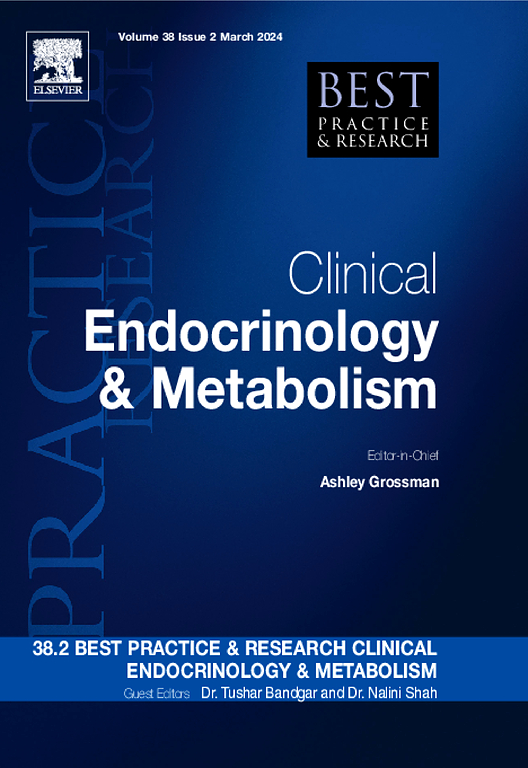Androgen insensitivity and the evolving genetic heterogeneity
IF 6.1
1区 医学
Q1 ENDOCRINOLOGY & METABOLISM
Best practice & research. Clinical endocrinology & metabolism
Pub Date : 2025-07-01
DOI:10.1016/j.beem.2025.102000
引用次数: 0
Abstract
Androgen Insensitivity Syndrome (AIS) is a 46,XY difference of sex development (DSD) classically caused by mutations in the androgen receptor (AR) gene, leading to variable androgen resistance and a broad phenotypic spectrum traditionally classified as complete, partial, or mild. Phenotypic variability can occur even with identical AR mutations, particularly those within the ligand-binding domain of the AR. Emerging evidence implicates non-coding regulatory variants, deep intronic mutations, AR co-regulator dysfunction, and oligogenic inheritance in the aetiology of AIS. The molecular diagnostic workflow should incorporate either targeted AR sequencing or whole-exome sequencing, depending on the clinical context. Biochemical and functional assays remain clinically useful, especially when AR variants are not detected or when variants of unknown significance (VUS) are identified. Advances in patient-derived hiPSC models and testicular organoids provide new insights into AR function and therapeutic strategies. Expanding genomic and epigenetic research will refine diagnostic accuracy, and personalized care, ultimately optimizing patient outcomes in AIS.
雄激素不敏感与进化中的遗传异质性。
雄激素不敏感综合征(AIS)是一种46,xy的性发育差异(DSD),通常由雄激素受体(AR)基因突变引起,导致可变的雄激素抗性,其表型谱广泛,传统上分为完全、部分或轻度。即使是相同的AR突变也可能发生表型变异,特别是在AR的配体结合域内的突变。新出现的证据表明,AIS的病因包括非编码调节变异体、深度内含子突变、AR共调节功能障碍和寡基因遗传。分子诊断工作流程应结合靶向AR测序或全外显子组测序,具体取决于临床情况。生化和功能分析在临床上仍然有用,特别是当未检测到AR变异或识别出未知意义变异(VUS)时。患者源性hiPSC模型和睾丸类器官的进展为AR功能和治疗策略提供了新的见解。扩大基因组和表观遗传学研究将提高诊断准确性和个性化护理,最终优化AIS患者的预后。
本文章由计算机程序翻译,如有差异,请以英文原文为准。
求助全文
约1分钟内获得全文
求助全文
来源期刊
CiteScore
11.90
自引率
0.00%
发文量
77
审稿时长
6-12 weeks
期刊介绍:
Best Practice & Research Clinical Endocrinology & Metabolism is a serial publication that integrates the latest original research findings into evidence-based review articles. These articles aim to address key clinical issues related to diagnosis, treatment, and patient management.
Each issue adopts a problem-oriented approach, focusing on key questions and clearly outlining what is known while identifying areas for future research. Practical management strategies are described to facilitate application to individual patients. The series targets physicians in practice or training.

 求助内容:
求助内容: 应助结果提醒方式:
应助结果提醒方式:


